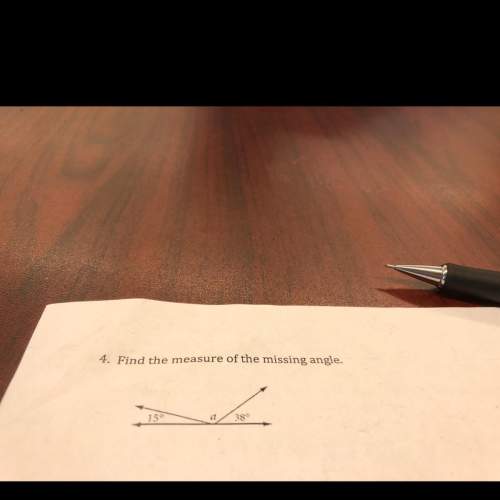
Mathematics, 21.04.2020 16:51 alyviariggins
Find the Jacobian ∂(x, y, z) ∂(u, v, w) for the indicated change of variables. If x = f(u, v, w), y = g(u, v, w), and z = h(u, v, w), then the Jacobian of x, y, and z with respect to u, v, and w is ∂(x, y, z) ∂(u, v, w) = ∂x ∂u ∂x ∂v ∂x ∂w ∂y ∂u ∂y ∂v ∂y ∂w ∂z ∂u ∂z ∂v ∂z ∂w . x = 1 6 (u + v), y = 1 6 (u − v), z = 6uvw

Answers: 3


Another question on Mathematics

Mathematics, 21.06.2019 19:10
Find the roots of the polynomial function f(x) = x^3 + 2x^2 + x
Answers: 2

Mathematics, 21.06.2019 21:30
Questions 9-10. use the table of educational expenditures to answer the questions. k-12 education expenditures population indiana $9.97 billion 6.6 million illinois $28.54 billion 12.9 million kentucky $6.58 billion 4.4 million michigan $16.85 billion 9.9 million ohio $20.23 billion 11.6million 9. if the amount of k-12 education expenses in indiana were proportional to those in ohio, what would have been the expected value of k-12 expenditures in indiana? (give the answer in billions rounded to the nearest hundredth) 10. use the value of k-12 education expenditures in michigan as a proportion of the population in michigan to estimate what the value of k-12 education expenses would be in illinois. a) find the expected value of k-12 expenditures in illinois if illinois were proportional to michigan. (give the answer in billions rounded to the nearest hundredth) b) how does this compare to the actual value for k-12 expenditures in illinois? (lower, higher, same? )
Answers: 1

Mathematics, 21.06.2019 23:00
Which of the following scenarios demonstrates an exponential decay
Answers: 1

Mathematics, 22.06.2019 00:30
Afarm is to be built in the shape of quadrilateral abcd, as shown below. all four sides are equal. a rhombus abcd is shown with diagonal ac equal to 15.5 feet and diagonal bd equal to 13.2 feet. what is the area of the farm? pleas only pick from the 4 below 62 square feet 52.8 square feet 57.4 square feet 102.3 square feet
Answers: 2
You know the right answer?
Find the Jacobian ∂(x, y, z) ∂(u, v, w) for the indicated change of variables. If x = f(u, v, w), y...
Questions

Mathematics, 26.07.2020 02:01

Mathematics, 26.07.2020 02:01



Mathematics, 26.07.2020 02:01

Mathematics, 26.07.2020 02:01



Mathematics, 26.07.2020 02:01


Biology, 26.07.2020 02:01


Mathematics, 26.07.2020 02:01

Mathematics, 26.07.2020 02:01

Geography, 26.07.2020 02:01


History, 26.07.2020 02:01


Mathematics, 26.07.2020 02:01

Geography, 26.07.2020 02:01
















